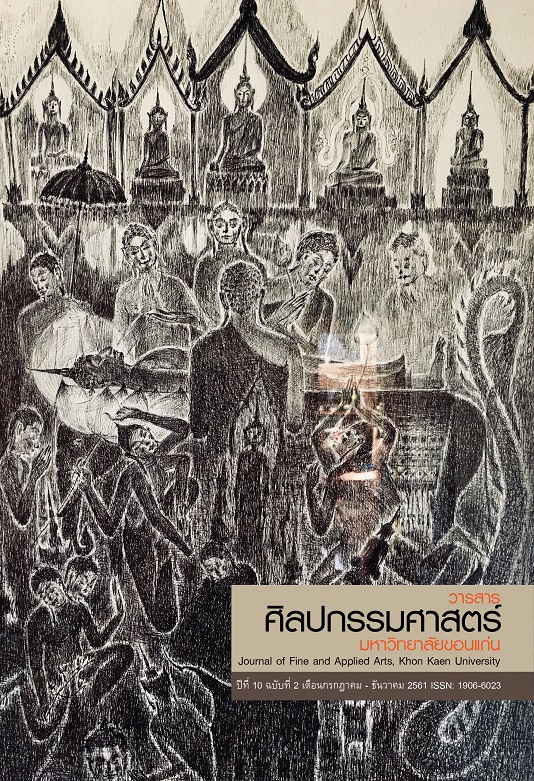The Development of Myanmar Costumes in Lakon Phanthang Rajathiraj of The Fine Arts Department
Main Article Content
Abstract
The purpose of this research was to study the development and style of Myanmar costumes in Lakon Phanthang Rajathiraj of The Fine Arts Department. Since 1952 Until 2017, By studying both participant and non-participant observation documents.
The research found that Development of Myanmar costume characters in Lakon Phanthang Rajathiraj of The Fine Arts Department. In the beginning, the costumes of Khon-Thai dramas to develop a unique style of drama. Later influenced by the Lakon Phanthang Phuchanasibtid. It has been developed to be more beautiful and comfortable to wear. And nowadays, the materials used in making costumes have changed. By choosing materials that are easily available on the market. To create beautiful costumes of the era. In the form of costume. Each character can be composed in several forms. There will be differences in wearing a dress, dressing, wearing a headdress, or even using the opposite colors of each character. By using the color scheme of Khon-drama costumes to create a distinctive character. And character costumes Indicates the social status of the character. Make the audience know which character is important in the scene.
This research aims to study the patterns and development of Myanmar costume characters in Lakon Phanthang Rajathiraj of The Fine Arts Department, To publish the costumes, It is popular and popular among other powerful groups such as schools and other organizations that display plays in Rajasthan. Continue to be sustainable.
Article Details
Content and information in articles published in the Journal of Fine and Applied Arts of Khon Kaen University is regarded as the opinion and sole responsibility of the author(s) directly; therefore, editors are not obliged to agree to or share any responsibility with regard to the content and information that appears within these articles.
All articles, information, content, image, etc. that have been published in the Journal of Fine and Applied Arts of Khon Kaen University is the copyright of the Journal of Fine and Appllied Arts of Khon Kaen University. Any person or organization who wishes to distribute all or parts of the articles for further dissemination or other usage must first receive permission from the Journal of Fine and Applied Arts of Khon Kaen University before proceeding to do so.


